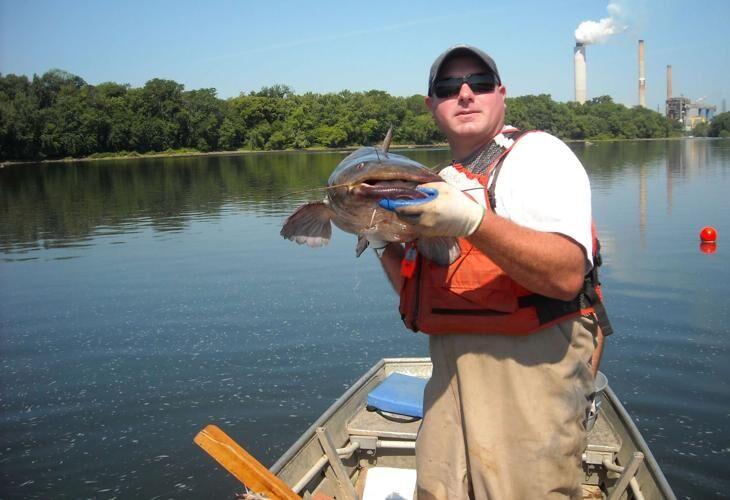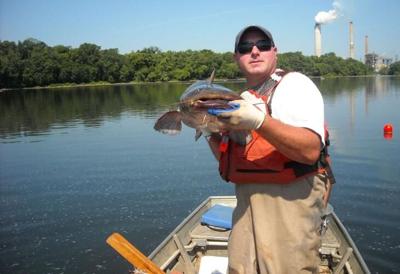Reprinted from the Middle Susquehanna Riverkeeper
In 2002, an angler caught a flathead catfish near a Lancaster County dam, the first documented record of the species in the greater Susquehanna River.
In the 20 years since, researchers are studying how much the apex aquatic predator has impacted the system, what can be learned from that process and how to better protect against other invasive species from entering our system.
“The accepted origin of the species in our river is from anglers who purposely introduced them to create a sport fishing element. We know of a separate introduction in the North Branch near Wilkes-Barre,” said Geoff Smith, Pennsylvania Fish and Boat Commission biologist for the Susquehanna River.
“They’ll likely meet in the middle at some point. We have record of them in certain tributaries, too, like the Juniata River. Interestingly, we have no reports of them at this time in the West Branch or the very upper stretches of the Susquehanna.”
According to Megan Schall, Associate Professor of Biology at Penn State-Hazleton, there is a certain recreational allure for having flatheads in our river system.

Listen to Megan Schall, Geoff Smith and Sydney Stark in the most recent episode of the Middle Susquehanna Riverkeeper Podcast as they talk about aquatic invasive species and specifically the flathead catfish. This is the first of what will be a three-part series on their research.
“It is a fish that can exceed 50 pounds, and the opportunity to catch something that large is unique for the Susquehanna,” she said. “However, it is also a top predatory fish that can eat a lot of other species in the basin and competes for habitat with them.”
“It definitely comes at a cost,” Smith agreed. “A 50-pound fish doesn’t just get that way without a massive amount of eating, and that comes at the expense of the fish biomass of the river.”
While full details of what flatheads are eating in the Susquehanna haven’t been fully studied, Schall, Smith and research student Sydney Stark have been working on better understanding the larger ripple effects of impacts.
“Based on how they’ve impacted other areas, they have the potential to feed on other recreational species, such as sunfishes, as well as ecologically or conservationally important species like shad,” said Schall.
Unfortunately, with a 20-year foothold in the river, the flathead may be here to stay, added Stark.
“The flathead can quickly and completely take over a system,” she said. “You can have 10 individuals and they can repopulate a waterway. That is why eradication can be difficult because even if you miss just 10 of them, they’ll continue to take over a system.”
According to Smith, their research isn’t focused on what is happening here, but what species such as flatheads can do elsewhere.
“We can use our situation as a proxy for what flatheads can do in another waterway, or what a species similar to the flathead that may not already be here can do in our own system,” he said.
Ultimately, the flathead situation offers an important cautionary tale on why people should be so vigilant in preventing the spread of invasives in our waterways.
“Clean your gear, let it dry and use chemical methods such as bleach as necessary. There are microscopic organisms that we like to call aquatic hitchhikers that are invasive to our area and can have a very negative impact that can stay viable for days in just a few droplets of water,” said Schall.
“For larger species, be mindful of not dumping your bait bucket in the stream. If your child has a goldfish they no longer want, don’t release it into the wild. It is the same with turtles – red eared sliders make a great pet, but they live a long time. Don’t free them in the wild because they are invasive and can have a big impact.”
Also, be mindful of your surroundings. If you see a situation where an invasive may be entering our system, report it. The Pennsylvania Fish and Boat Commission has an online reporting form available on its aquatic invasive species page.
For more information, listen to the full episode of the Middle Susquehanna Riverkeeper Podcast, which is the first of what will be three parts on this topic, with future episodes focused on findings from recent research and more details of impacts of the flathead and other invasive species.













